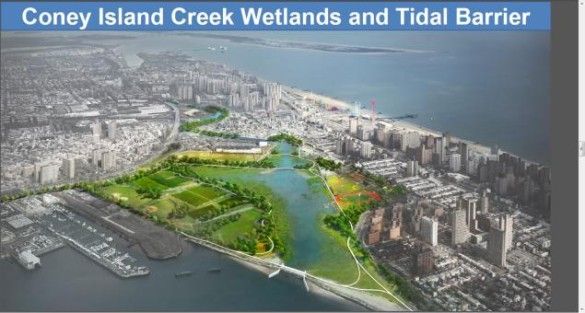Obstacles Seen For Bloomberg’s Storm Protection Plan

Mayor Michael Bloomberg’s ambitious and massive $20 billion storm protection program that seeks to safeguard New York City from future extreme weather catastrophes faces some serious obstacles before it becomes reality. The New York Times is reporting that the plan will have to pass through the ringer of City Hall, Albany, Washington, government agencies, zoning panels and community groups before construction ever begins.
Yesterday we reported on the stark climate data that inspired Bloomberg to come up with a massively detailed storm protection plan, that if enacted, would be his greatest legacy. The plan, which calls for massive construction projects and the placement of a network of seawalls and bulkheads across the city’s coastline, would dramatically alter the look and landscape of the city. The $20 billion price doesn’t figure in estimated billions more needed for the project as it will inevitably grow in size and scope. But the cost and construction would represent only the final hurdles of the ambitious plan.
Andy Darrell, New York regional director of the Environmental Defense Fund explained the key of bringing the plan together.
“Many of these solutions will require an unprecedented level of cooperation,” Darrell told the Times. “We know how to do these things. What we have to do is clear a path.”
Columbia geophysicist Klaus Jacob agreed with Darrell’s assessment.
“A plan is a plan is a plan,” Jacob told the Times. “But there will be a hard reality of how to put this into action. Many of the infrastructure systems that the city depends on are not under city control.”
With Bloomberg serving out his final term, part of the problem will be how much leadership the future mayor invests in the project. While candidates like Council Speaker Christine Quinn support the project, others, like Public Advocate Bill de Blasio raised questions.
“Many questions remain. As we review the plan, we must ensure that it truly serves the needs of low-income residents without a safety net, many of whom suffered the worst and longest-lasting impacts from Superstorm Sandy,” de Blasio told the Times.



